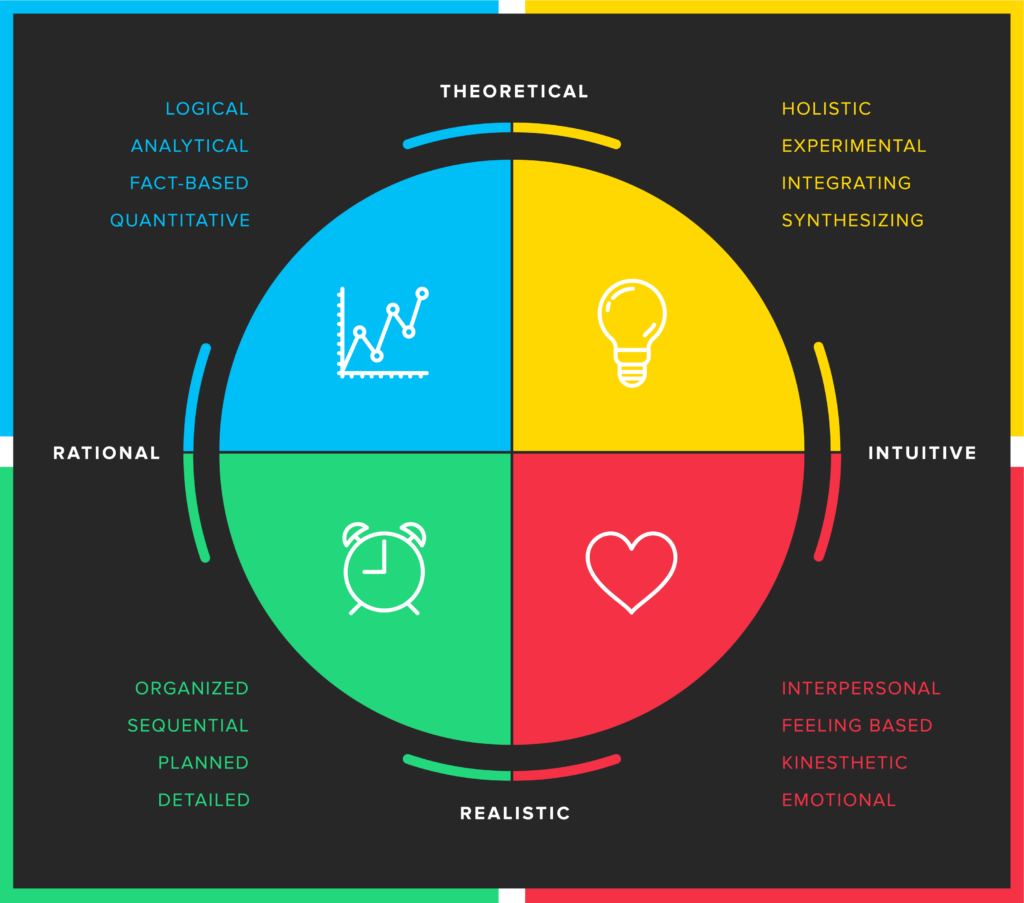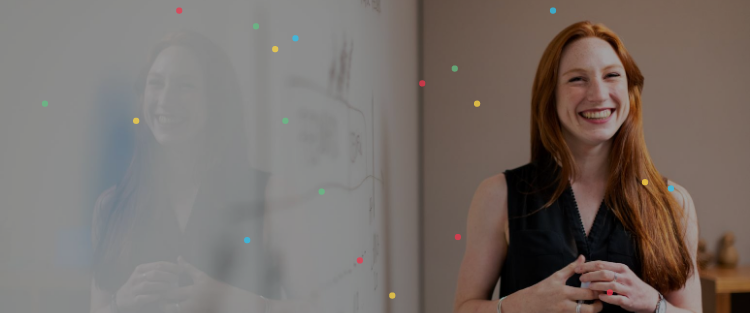This article is a guest post from Ashley Blackburn, Director of Programs at Uncharted Learning.
Do you know what your brain “looks” like?
I didn’t, until about 3 months ago when I completed a Whole Brain® Thinking assessment (called the HBDI®) and participated in a debrief workshop at a professional development event. Through this experience, I gained exciting new insight into my own thinking and that of everyone around me – students I’ve taught, colleagues I’ve worked with on teams, supervisors I’ve reported to, even my personal connections.
Here’s what I learned, in a quick snapshot:
- Everybody thinks differently.
- There is no right or wrong way to think!
- How we think guides how we act and interact.
- Human thinking preferences fall into four distinct categories, organised in the Whole Brain® Model (pictured below) in the following quadrants:
- Blue: Logical, analytical, fact-based, quantitative thinking.
- Green: Organised, sequential, planned, detailed thinking.
- Red: Interpersonal, feeling-based, kinesthetic, emotional thinking.
- Yellow: Holistic, experimental, integrating, synthesising.

- Everyone can (and does) successfully think and perform in all four quadrants.
- At the same time, everyone has different preferences for how they like to think, or how their brain naturally thinks.
- Understanding Whole Brain® Thinking can provide insight into individual, pair, and group dynamics for improved communication, innovation, and productivity.
After learning more about my own brain, I was inspired to dig deeper into the model – so I completed the training program and became a Whole Brain® Thinking HBDI Certified Practitioner. The more I’ve learned about this model, the more energised and curious I’ve become about the applications to teaching, and the connections between thinking and learning.
As I went through the HBDI® certification process, I couldn’t help but make connections to my other areas of passion and interest: experiential learning, entrepreneurship, and learner-centered teaching. (This sort of synthesis makes sense, because I rank off-the-chart in my yellow thinking preference!)
The more I learned, the more I started to connect dots between thinking and education. I noticed how Whole Brain® Thinking lines up with what we know about the entrepreneurial mindset and reflected on how both successful entrepreneurs and teachers think and communicate across all four quadrants of their brains. I started to wonder: If we were to teach with our whole brains, what would that look like? Here’s what I came up with. “Whole Brain® Teaching” involves:
- Designing high-impact, multi-modal activities and experiences that engage learners across all four thinking quadrants
- Creating discussion prompts that address the what, how, who, and why of a topic – appealing to thinkers of all preferences
- Forming groups to combine different thinking preference strengths and maximise “cognitive diversity” on teams
- Developing holistic assessments that invite learners to demonstrate knowledge and competency in ways that align with their thinking preferences
As a teacher, I was trained to adapt and accommodate the range of abilities and identities that students bring with them into the classroom – but I never fully learned how students think, or how I as a teacher think, for that matter. The disconnect between education (how we teach) and brain science (how we learn) has always seemed ironic to me. In higher education programs, we learn how to develop lesson plans, manage classrooms, and create rigorous assessments – but we don’t always learn about learning. I do believe this is changing, and I also believe the Whole Brain® Model can provide useful strategies for making the connection between teaching and learning.
The opportunity to gain insight into your own thinking preferences while applying knowledge of Whole Brain® Thinking to challenges specific to educators is something many will find rewarding. Applying Whole Brain® Thinking in classrooms, schools, and universities could drastically change the way we teach to account for diverse thinking styles and pave the way for a more equal and rewarding education.
Interested in learning more about Whole Brain® Thinking and how it can help educators assist students in reaching their full potential? Get in touch with Herrmann.

This article was originally published on our US site. It has been updated and republished here to ensure our readers don’t miss out on valuable information.

